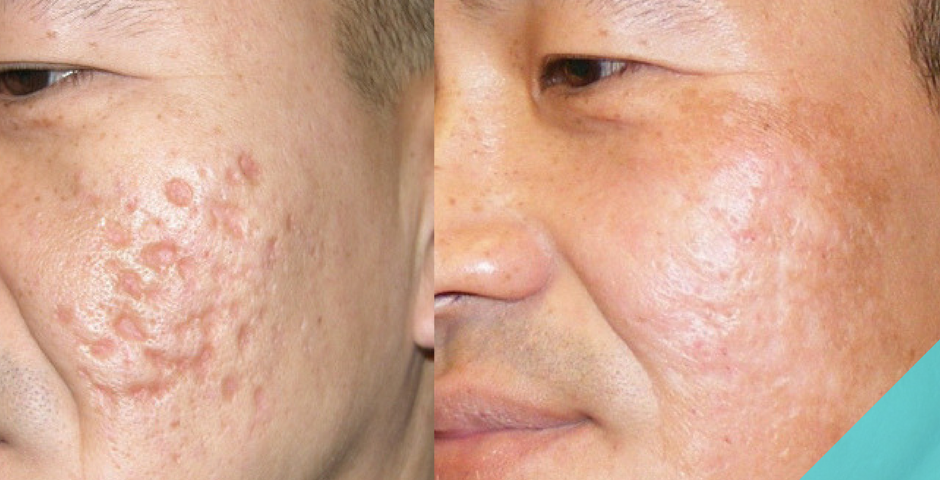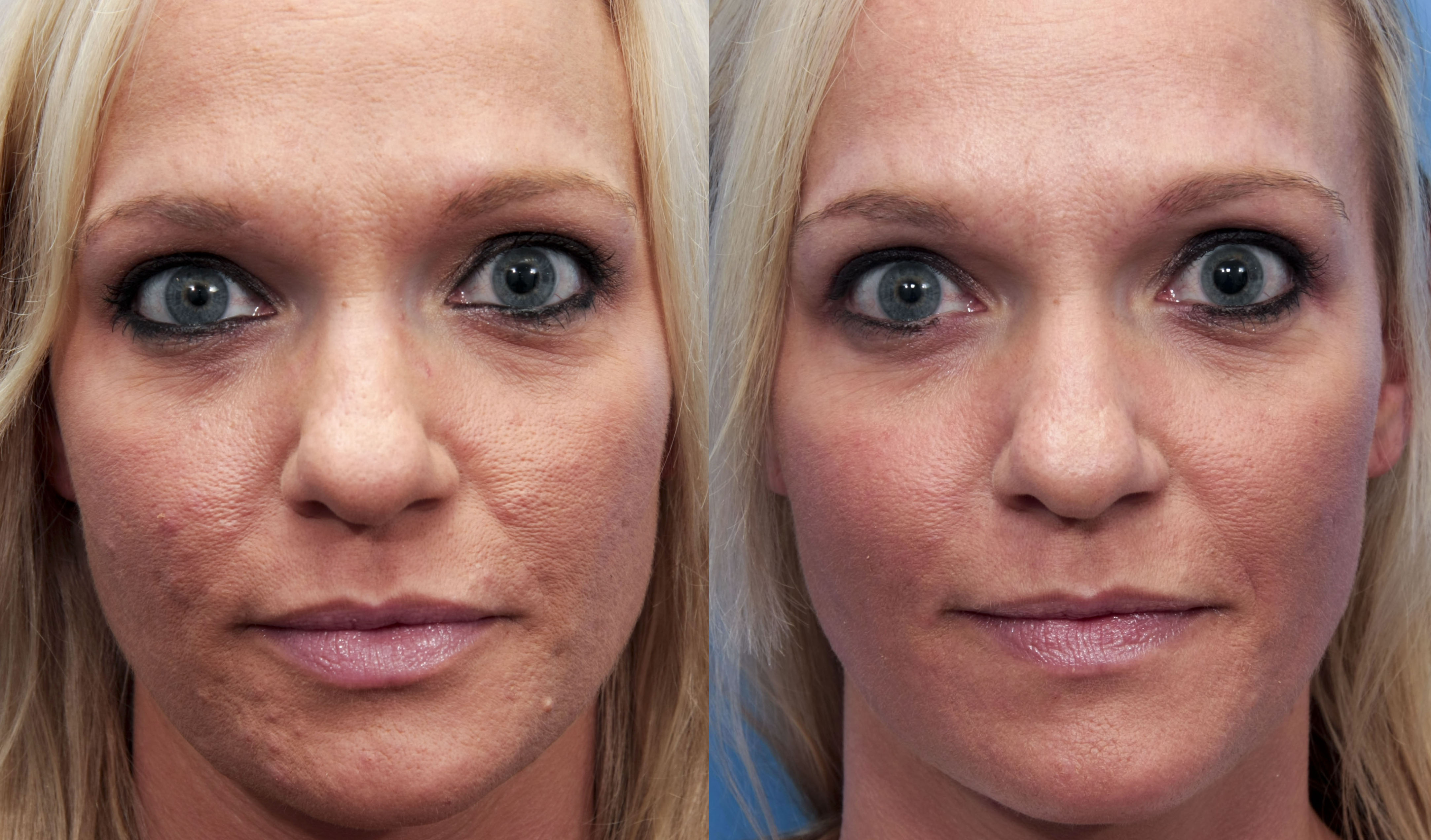Recognizing the Numerous Skin Problem and Reliable Therapy Alternatives for Acne Marks
Acne scars represent a complicated interplay of skin problems that substantially effect individuals' self-confidence and overall skin health. As we explore the landscape of acne scar monitoring, it ends up being noticeable that the trip toward clearer skin may entail more than just topical solutions.
Types of Acne Scars
Acne scars can manifest in various kinds, each calling for details therapy methods. Both key categories of acne marks are atrophic and hypertrophic scars. Atrophic scars are identified by a loss of cells, resulting in depressed areas on the skin. These marks are further identified right into three subtypes: ice pick marks, which are narrow and deep; boxcar scars, which are larger and have well-defined edges; and rolling scars, which produce a wave-like appearance because of irregular skin appearance.
In contrast, hypertrophic scars result from an overflow of collagen during the healing procedure, causing increased locations on the skin. These scars are typically solid and can vary in shade, in some cases showing up red or darker than the bordering skin.

Reasons For Acne Scarring
Scarring takes place as an outcome of the body's natural healing feedback to inflammation and injury triggered by acne lesions. When acne forms, it causes an inflammatory response, resulting in the release of various cytokines and development factors that advertise healing. This process can sometimes lead to excessive cells formation or poor repair service, resulting in marks.
The primary reasons of acne scarring consist of the seriousness of the acne itself, period of the lesions, and private skin kinds. Extreme inflammatory acne, such as nodules and cysts, is more likely to cause scarring because of deeper tissue damages. In addition, improper handling of acne sores, such as picking or squeezing, can intensify cells injury and inflammation, enhancing the chance of scarring.
Genetic proneness likewise plays a substantial function; people with a family members background of scarring are at a higher danger. Skin type and color can affect scar formation, as darker skin tones may experience post-inflammatory hyperpigmentation, while lighter skin may develop atrophic marks.

Treatment Choices for Scarring
Effective treatment alternatives for acne scarring differ relying on the kind and seriousness of the scars. Normally classified into atrophic, hypertrophic, and keloid scars, these conditions require customized strategies for ideal outcomes.
For atrophic marks, which are defined by a loss of tissue, therapies such as chemical peels, microdermabrasion, and laser treatment are frequently used. These approaches advertise skin revival and stimulate collagen manufacturing, therefore improving skin texture. click this Subcision, a minimally invasive procedure, can likewise work by breaking up fibrous bands underneath the skin.
Hypertrophic and keloid scars can be more testing to deal with. Options consist of corticosteroid shots to minimize inflammation and flatten the marks. skin rejuvenation treatments. In many cases, cryotherapy or laser therapy might be advised to reduce their appearance
Surgical alternatives are available for extreme scarring, where excision or skin grafting might be necessary. It's necessary for individuals to seek advice from with a skin doctor to examine their specific scar type i thought about this and review one of the most suitable treatment plan. Combining several therapies commonly yields the most effective outcomes, making sure that each client's special skin problem is resolved efficiently.
Natural Remedy and Natural Solutions
Natural services and natural home remedy can provide an available approach for individuals seeking to enhance the look of acne scars. Numerous ingredients found in the home kitchen area have actually demonstrated possible benefits in boosting skin texture and promoting recovery.
Applying fresh aloe vera gel straight onto the marks can help improve skin hydration and minimize inflammation. Honey possesses natural anti-bacterial and moisturizing high qualities that can aid in mark recovery.
One more effective option is lemon juice, which serves as an all-natural exfoliant and can lighten hyperpigmentation. Nevertheless, it must be made use of carefully, as it might cause photosensitivity. Oatmeal masks are additionally advantageous; their mild peeling can help eliminate dead skin cells while relaxing irritability.
Essential oils, such as tea tree oil and lavender oil, can additionally sustain mark recovery because of their antimicrobial residential or commercial properties. It is important to perform a patch examination prior to applying any kind of solution to make certain there are no adverse responses. These natural services can be a complementary method in the journey to reduce acne scars.
Avoiding Future Scarring
Embracing a proactive method to skincare can substantially decrease the danger of establishing future acne scars. Among the crucial methods is to handle acne effectively as it arises (acne treatment for sensitive skin). This includes utilizing non-comedogenic skincare products and medications recommended by skin specialists that target acne without aggravating the skin. Regular cleaning, peeling, and hydration can aid maintain skin health and protect against blocked pores.
Additionally, preventing look at this website the temptation to choose or squeeze acne lesions is critical, as this can cause inflammation and subsequent scarring. Instead, individuals ought to concentrate on using topical treatments that promote healing and decrease inflammation. Active ingredients such as salicylic acid, benzoyl peroxide, and retinoids are known for their effectiveness in managing acne and decreasing marks.

Lastly, keeping a healthy diet rich in anti-oxidants and staying moisturized assistances skin regeneration. By carrying out these safety nets, people can significantly reduce their danger of future scarring and advertise overall skin health.
Verdict
In final thought, a detailed understanding of acne scars, incorporating both atrophic and hypertrophic kinds, is important for effective treatment techniques. Appointment with a dermatologist remains vital to design customized approaches that take into consideration private skin kinds and scar extent, eventually boosting the efficacy of mark monitoring techniques.
Acne scars stand for a complex interplay of skin problems that significantly impact people' self-esteem and general skin health. The 2 key categories of acne scars are atrophic and hypertrophic marks. These scars are further classified into three subtypes: ice pick scars, which are narrow and deep; boxcar marks, which are larger and have distinct sides; and rolling marks, which develop a wave-like look due to uneven skin structure.
An extensive examination with a skin doctor can assist establish the most ideal treatment, taking right into account the person's skin type, mark extent, and overall skin wellness.
Assessment with a skin doctor remains vital to devise tailored strategies that take into consideration private skin kinds and mark severity, inevitably improving the efficacy of mark management methods.